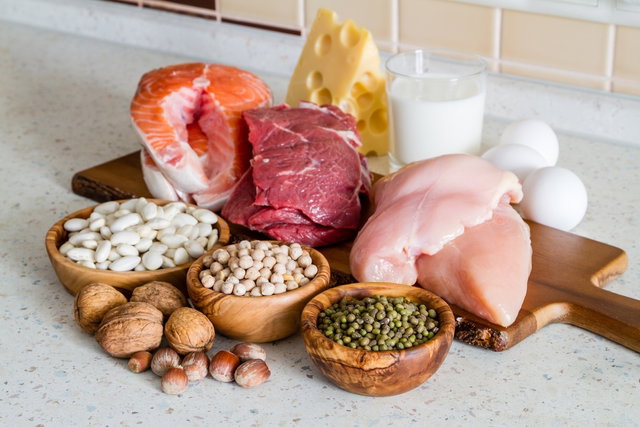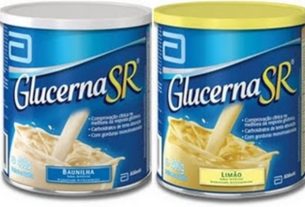Proline is an amino acid that participates in the formation of collagen, a protein that is important for maintaining the elasticity and firmness of the skin, as well as being essential for the formation of tendons, muscles and cartilage.
Although it is produced by the body through glutamic acid, proline can also be obtained through eating foods such as meat, fish, cheese, beans, oats, nuts, cashews and Brazil nuts, for example.
Furthermore, proline is also used as a flavoring in processed foods and can be found in the form of supplements, in the form of capsules, in pharmacies and health food stores.

What is it for
Proline is indicated for the following situations:
- Maintain skin health;
- Strengthen joints and tendons;
- Maintain heart health;
- Promote wound healing;
- Strengthen the immune system.
Furthermore, proline is also used by industry in the production of some medicines; as a food flavoring; in moisturizing creams and conditioners; and in the form of a compound to promote the growth of fruits and vegetables.
Foods rich in proline
The following table shows the amount of proline for every 100g of each food:
To obtain all the benefits of proline, it is essential to maintain a healthy diet and practice physical activity regularly.
Recommended quantity
As it is not an essential amino acid for the body, there is no recommendation on the amount of proline that should be consumed per day.
However, maintaining a varied and healthy diet, with dairy products, nuts, legumes and cereals, is enough to obtain proline naturally.
If you want to know how to include proline in a healthy diet, make an appointment with the endocrinologist closest to you:
Taking care of your health has never been easier!
When to use supplements
Proline supplements are generally indicated to improve skin health, promote wound healing, and prevent joint and ligament injuries.
Proline supplements are found in capsules, where recommendations vary between 100 mg and 500 mg per day, and should be taken with 1 glass of water between meals.
However, the recommended dose of proline varies depending on the objective being treated and, therefore, this supplement should only be used under the guidance of a doctor or nutritionist.
Possible side effects
When used in moderate amounts, proline supplement is safe. However, there are still no studies that have evaluated the possible side effects of using large amounts of proline supplements.
Who cannot use
Proline supplementation is not recommended for children, nor is it recommended for pregnant or breastfeeding women, and for people with hyperprolinemia, a genetic condition that causes increased levels of proline in the blood and the elimination of proline in the urine. hydroxyproline and glycine.
Furthermore, people who use medication or have any illness should always consult a doctor before taking proline supplements.
Bibliography
- EUROPEAN MEDICINES AGENCY. Information for the package leaflet regarding proline used as an excipient in medicinal products for human use. Disponível em: <https://www.ema.europa.eu/en/documents/scientific-guideline/draft-information-package-leaflet-regarding-proline-used-excipient-medicinal-products-human-use_en.pdf>. Acesso em 27 out 2022
- UNITED STATES DEPARTMENT OF AGRICULTURE. Food Data Central. Available at: <https://fdc.nal.usda.gov/ndb/search/list>. Accessed on October 27, 2022
- BRAZILIAN CHEMISTRY SOCIETY. L-PROLINE. Available at: <http://qnint.sbq.org.br/qni/popup_visualizarMolecula.php?id=97__U4vIBd9ULmr-kNsr7sb40YTPa1wgHhhSCjPJom6KDeIEUDQZz3Ffii-c3gxQI2-WFDWLpZ7voxDrp-1u9g==#:~:text=A%20L %2Dproline%20%C3 %A9%20um%20%CE%B1%2Damino%C3%A1cid%2C%20chiral%20e, the%20interstitial%20tissues%20of the%20organism>. Accessed on October 27, 2022
- NATIONAL LIBRARY OF MEDICINE. Compound summary: Proline. Available at: <https://pubchem.ncbi.nlm.nih.gov/compound/Proline>. Accessed on October 27, 2022
- KARNA, Ewa, et al. Proline-dependent regulation of collagen metabolism. Cellular and Molecular Life Sciences . Vol.10. 10.ed; 1911-1918, 2020

Sign up for our newsletter and stay up to date with exclusive news
that can transform your routine!
Warning: Undefined array key "title" in /home/storelat/public_html/wp-content/plugins/link-whisper-premium/templates/frontend/related-posts.php on line 12
Warning: Undefined array key "title_tag" in /home/storelat/public_html/wp-content/plugins/link-whisper-premium/templates/frontend/related-posts.php on line 13




